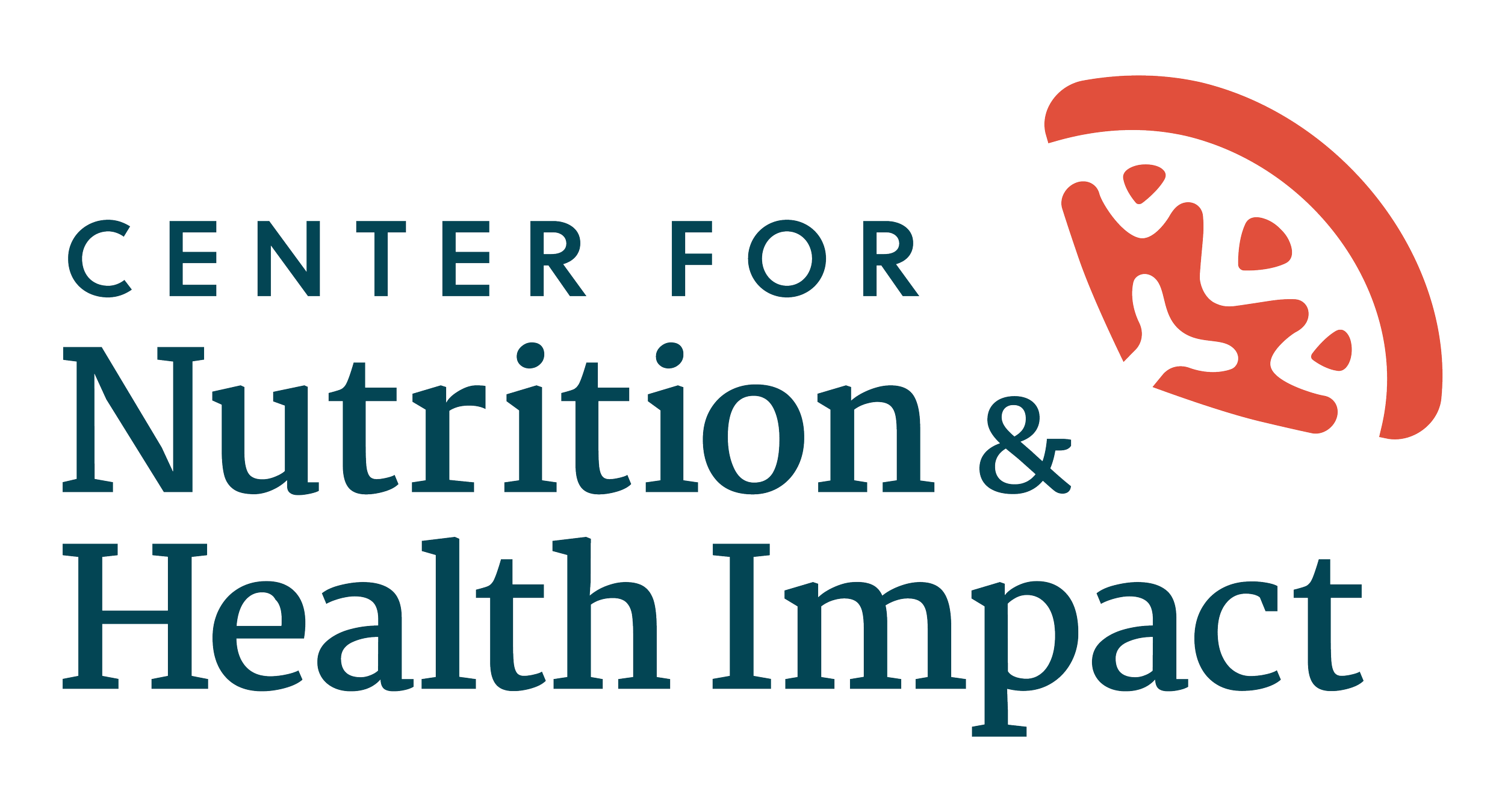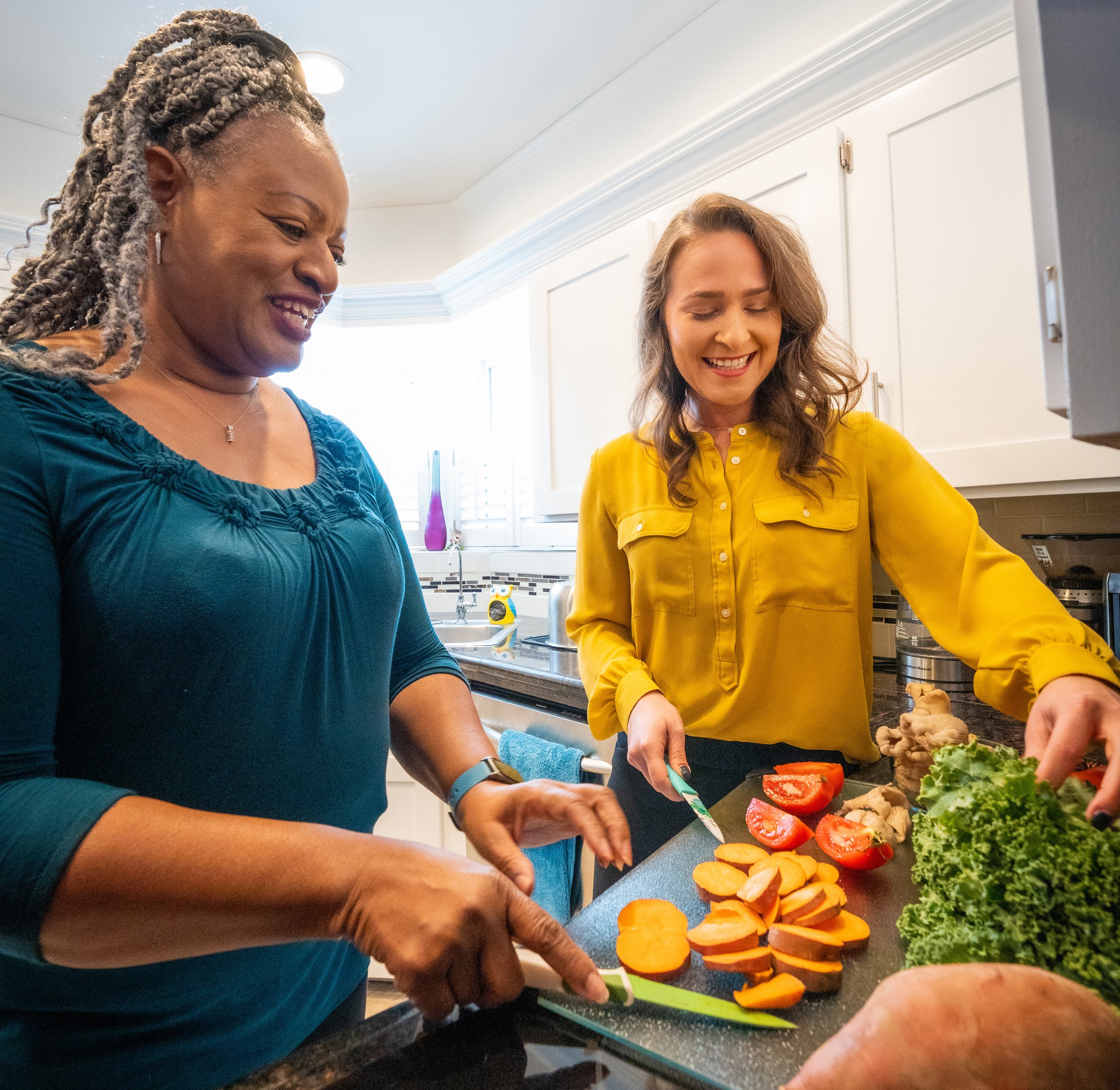GusNIP Partner Feature: FreshRx Oklahoma
------- + -------
In 2021, Erin Martin founded FreshRx Oklahoma, a Gus Schumacher Nutrition Incentive Program (GusNIP)-funded produce prescription program (PRx) that partners with primary care clinics while sourcing from local, regenerative farmers. The team is deeply committed to the program’s purpose: to provide nutrient-dense, locally grown produce to people to help manage their diabetes and improve their overall health. Through person-centered care, education and Food as Medicine (FAM), FreshRx Oklahoma gives people more ways to stay healthy.
Martin’s passion for helping others started at age 15 when she started working with older adults. Today, she holds a master’s degree in gerontology from the University of Southern California—the first and number one gerontology school in the world—and has worked in all levels of long-term care. She consults on FAM both nationally and internationally, helping communities scale farmers and implement their very own FAM programs. She is certified in Regenerative Soil Advocacy and is passionate about the link between soil health and human health. In addition to her role as director of FreshRx Oklahoma, Martin is the president of the Tulsa Urban Ag Coalition and the co-lead of Oklahoma’s Food is Medicine Policy Coalition.
Pictured above: FreshRx Oklahoma founder and director Erin Martin.
How is FreshRx OK implementing regenerative agriculture practices? How has this affected the sustainability and growth of your partner farms?
We have built a farmer coalition and source from it using regenerative agriculture practices. We support these farmers to scale by connecting them to resources, capital, best practices and education. We have helped eight farmers get funded for high tunnels through the Natural Resource Conservation Service to extend their seasons to year-round growing and increased crop diversity. We have supported and purchased from 27 small-scale farms since our inception, with most reporting that our program makes up 50-90 percent of their income. Having a consistent market that values quality over quantity, removing the arduous tasks associated with community supported agriculture (CSA) and barriers that come with large distribution, is a game changer for farmers. Many of our farmers have doubled or tripled their volume in just three years with the support of our program, which has resulted in more healthy food for both FreshRx OK and the wider community.
When navigating farmer partnerships, what are some things that you consider, especially relating to diverse crops offerings and environmental practices?
We look for farmers using some or all five of the regenerative agriculture principles:
Soil armor (cover crops)
Minimal soil disturbance (little or no till)
Plant diversity (no monocropping)
Continual live plant/root (no fallow)
Livestock integration (if possible)
Pictured above: FreshRx Oklahoma Founder and Director Erin Martin with a FreshRx OK participant working on improving her diabetes and picking up local vegetables from the program distribution.
Pictured above: Local green tomatoes from a BIPOC local North Tulsa farmer named Rodney Clark.
Pictured above: FreshRx Oklahoma’s local and regenerative farmer coalition at our quarterly best practices training at Robinson Ranch in Bixby, OK.
Some of our farmers are regeneratively certified through Soil Regen and Regen Ag Lab. Some plant tissue from our partnered farms have been studied in the Bio Nutrient Association study on nutrient variation in the food supply, which proved that the crops with the highest nutrient density were under regenerative farm management. We also look at taste—the first and best indicator of nutrient density—evaluate farmers' goals and needs, and explore how we can help them move along the continuum of regenerative agricultural practices. Additionally, we look at food safety plans and help the farmers navigate those standards for us and other markets.
As someone who is certified in Regenerative Soil Advocacy, what does regenerative agriculture mean to you personally? How can it transform food systems across the U.S. and globally?
After working in all levels of long-term care and seeing older adults on 15 to 32 prescription drugs with multiple chronic conditions, I held a very disheartened view of the world. Regenerative agriculture gave me hope for the first time in a long time, not only because of the environmental benefits but the effect it has on regenerating nutrient density and reducing chronic disease. The body can heal itself if it gets what it needs but if the food is minerally depleted, then how do you heal? Regenerative agriculture means mimicking nature. It means healing ourselves and our souls by restoring ancient practices partnered with modern knowledge and technology. Regenerative agriculture is one of the best solutions with the largest ripple effect. It is everything. It can transform us, our animals, plants, air, mental health and peace for generations to come. Without it—without restoring the soil—we cannot survive.
A central goal of FreshRx Oklahoma is to build health equity. How are you addressing health disparities in North Tulsa? What successes and challenges have you experienced?
Pictured above: The Diabetes 101 FreshRx class with FreshRx Oklahoma’s dietician Cyndi Schneider of Crossover Health Services.
We believe that those with the worst health outcomes and with the least resources deserve the best food available as opposed to expired, unhealthy and the worst food available. These populations deserve food that expedites their physical and mental healing—not food that exacerbates their current chronic conditions. The challenge was finding good farmers and getting them to scale and stay in integrity with our sourcing. I was told, “You won't be able to do it and you won't be able to do it year-round.” We have provided local food every other week since July 2021 and don't plan on stopping. In fact, now we are trying to keep up with the farmers' scale and connecting them to more markets. We have experienced an outpouring of community support and engagement through our team, partners, funders and volunteers. We have produced nationally recognized health outcomes for people in North Tulsa who have Type 2 Diabetes, live in areas with limited access to food retail sites, have limited income and identify as Black, Indigenous and People of Color (BIPOC) while growing a local food system in our community. We have also supported BIPOC farmers expand their food production.
What Food as Medicine approaches is FreshRx using to help people in North Tulsa manage their diabetes and improve their overall health?
By providing a hybrid version of both food and education, we reduce HbA1c levels by one to two percent in 12 months on average, with largest reductions reaching up to five to six points. The largest weight loss has been 93 pounds with an average weight loss of up to 10 pounds per person. We have seen a significant increase in consumption of vegetables, reduction in soda consumption and improvement in overall health. We provide free food for 12 months plus four to six cooking demos, nutrition and stress management courses per month—both in-person and virtual. We have found creative ways to encourage engagement. We are elated that our education engagement is incredible with rooms packed with people in every single class. Along with food and education, we provide health metric testing checkpoints for HbA1c, weight and blood pressure measurements. Participants are relatives and neighbors who are carpooling and supporting each other through their health journeys. Above all, we have created an empowering experience that creates community, which has been missing from many programs that feel “like a handout” as many participants have expressed.
Pictured above: FreshRx Oklahoma participant (now team member!) Debra Cooper and director Erin Martin cooking together for the Tulsa People magazine.
In recent years, the conversation around agriculture and climate change has gained much momentum. What actionable steps can people take to implement sustainable agriculture practices on an individual, community and policy level?
An individual can practice sustainable practices on their own lawn by participating in programs like the Yard-to-Yard program. It certifies homeowners and renters in a long list of simple, affordable, sustainable practices at their home including high mowing, mulching, planting native plants, planting edible plants, rain catchment and much more. Communities and individuals can build local food systems and encourage institutions to source food locally by supporting local CSA models, food hub networks and farmers markets. Communities can advocate for city and county policy changes that encourage local urban agriculture production and food access by speaking to local officials and presenting to the city council. States can impose local procurement policies, like Hawaii with its [Medicaid Section 1115 demonstration] for FAM or Oklahoma with its soil health bills which provide incentives and support for farmers to use climate-smart practices, such as cover crops and more informative soil health testing. We vote every day with the dollars that we spend and being more and more conscious of where products came from and how they were created will help with a more regenerative future.
How do you foresee holistic approaches to nutrition like regenerative agriculture and Food as Medicine evolving in the next five to ten years? What advice do you have for people looking to get involved?
I envision the regenerative agriculture and the FAM movements joining forces as more and more data link regenerative agriculture to significantly higher rates of nutrient density and improvement of human health. I encourage all programs, institutions and other organizations to use food as a teaching tool and be conscious and ethical in the way we source food. The more we drive both demand and supply of healthy, nutrient-dense food, the more becomes available and integrated into our everyday lives. If you are running a FAM program, find ways to partner with local farmers using good soil health practices. If you are sourcing from a distributor, express your interest in supporting farmers using regenerative agriculture practices.








